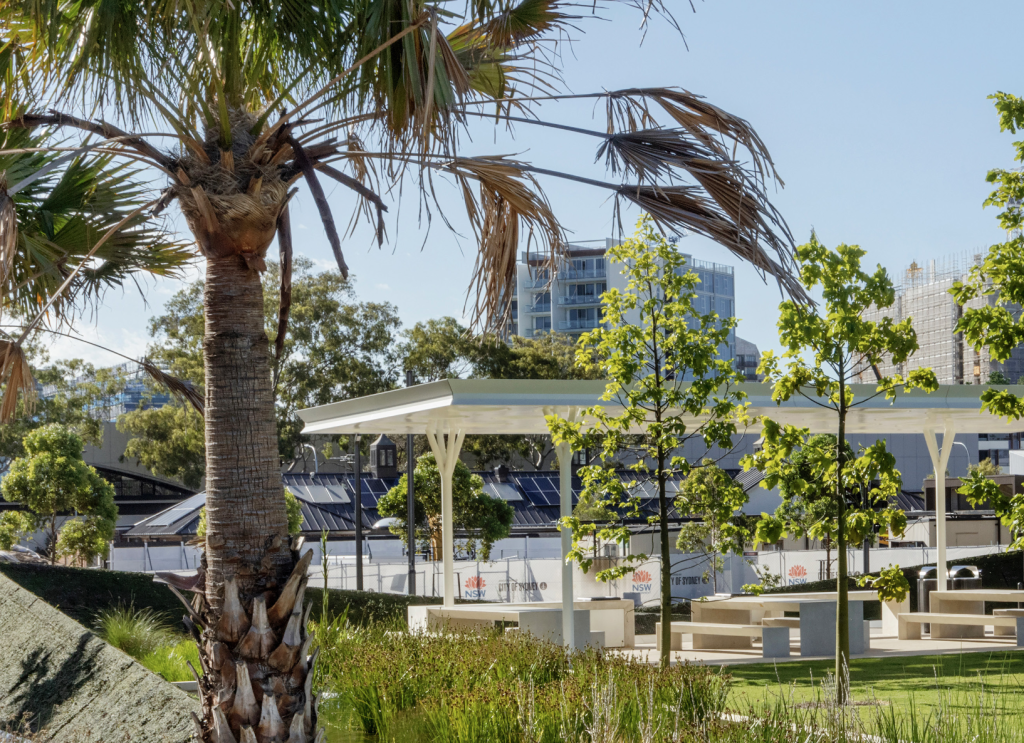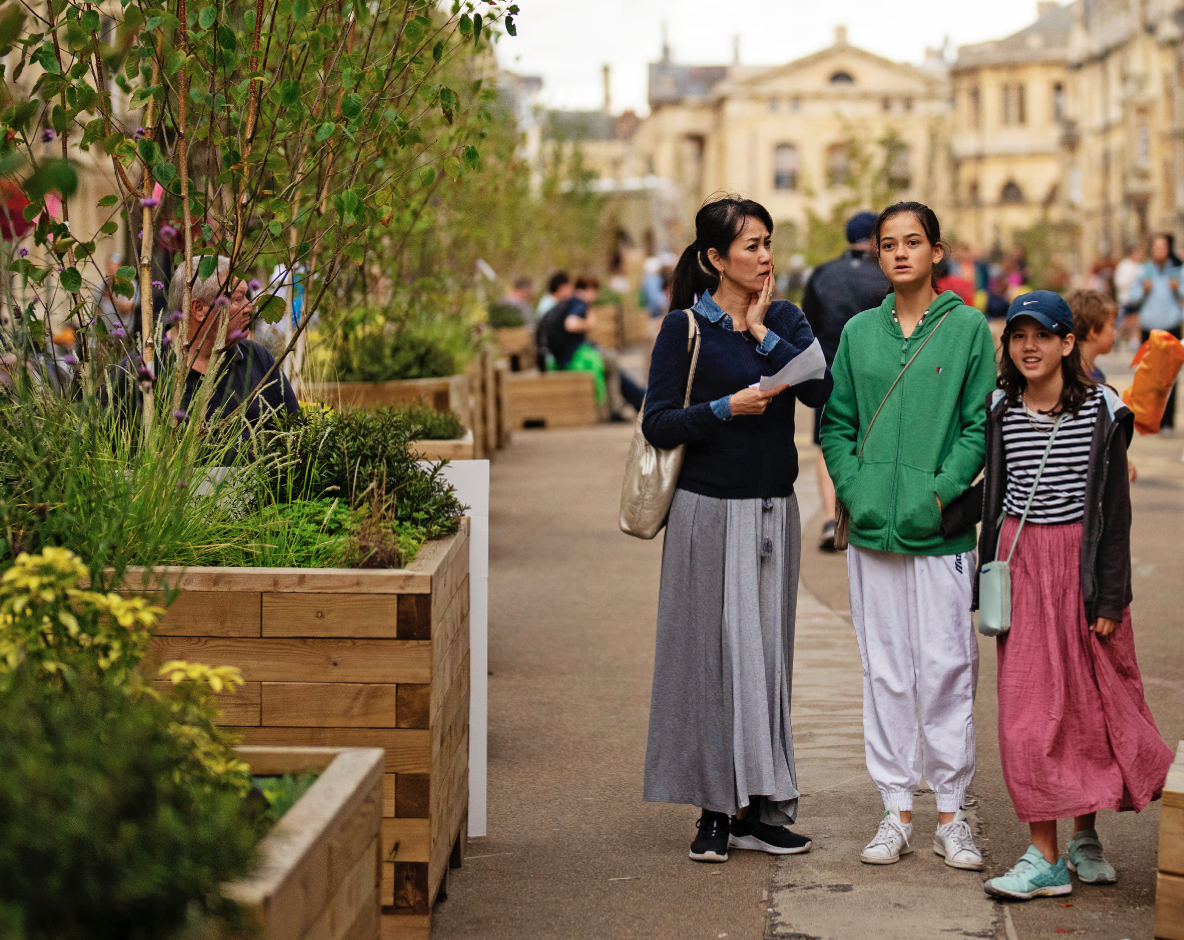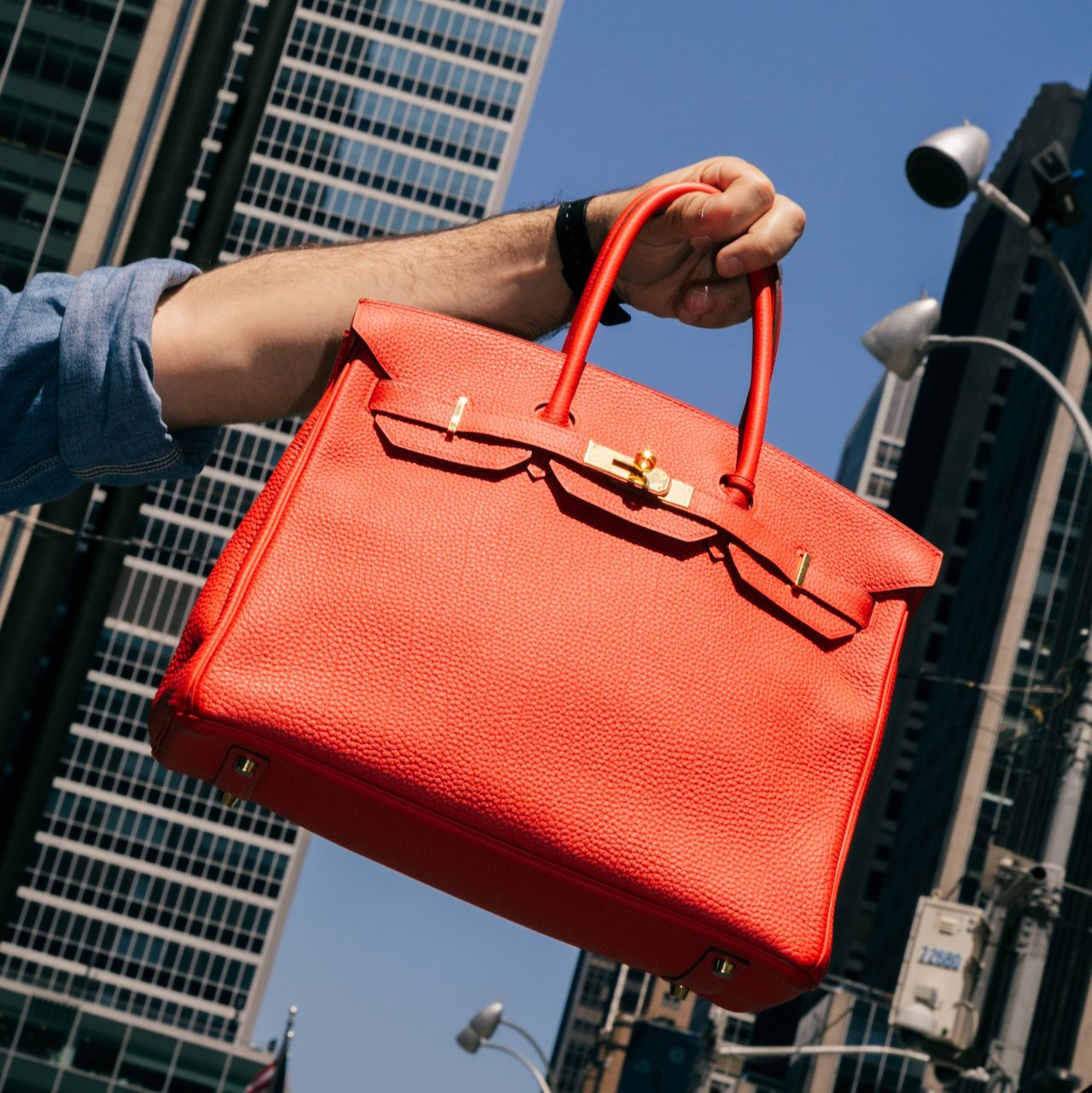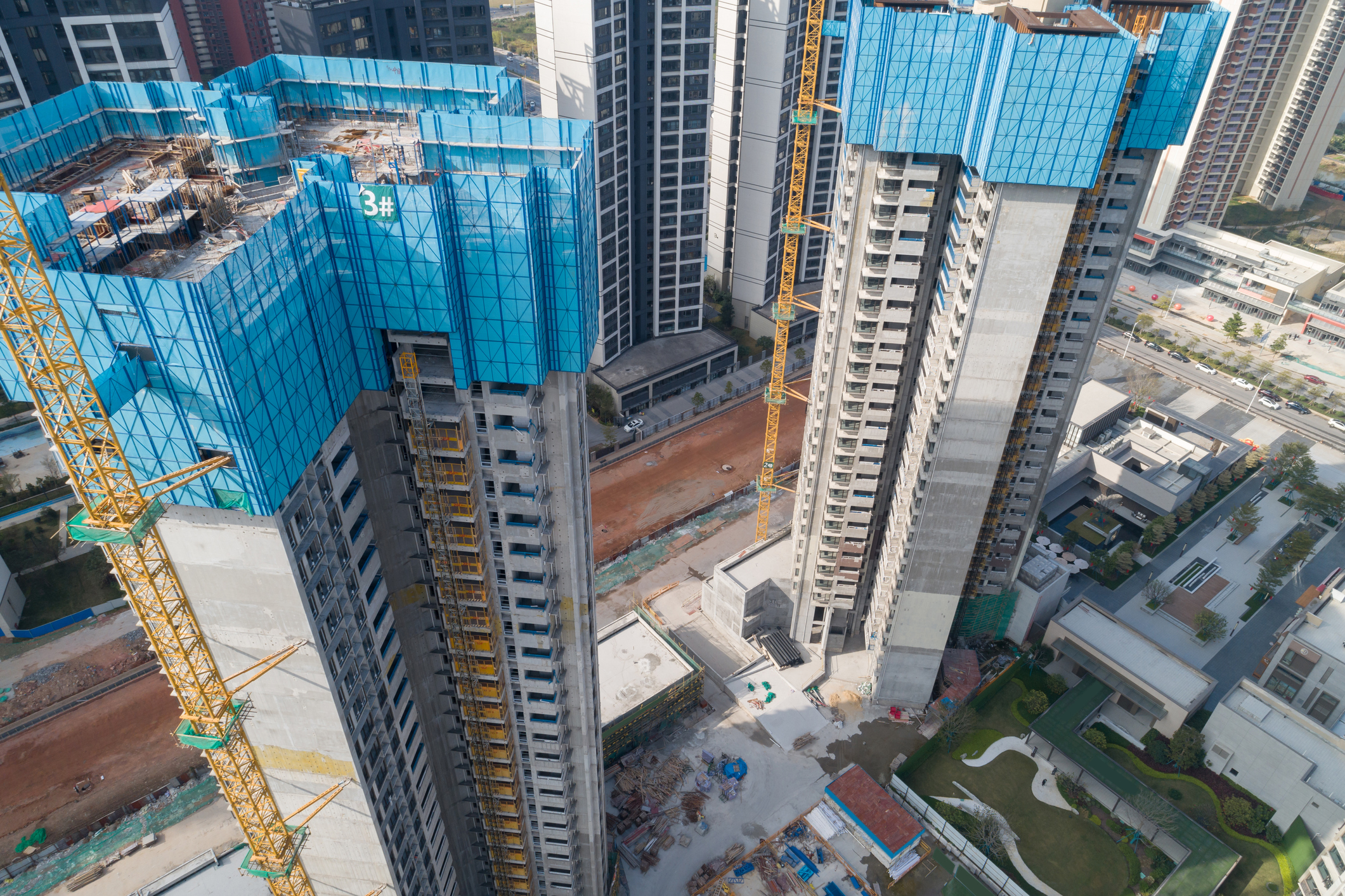A Vision for Sustainable Cities And The Need for Change
They are where most of us reside but our cities will have to get greener to meet future needs
It’s remarkable how quickly notions of sustainability have gone mainstream in a few short years. From the rapid uptake of renewable power sources to the growth of the circular economy, there’s now a widespread acceptance that the earth’s resources are finite and will require more sophisticated management strategies if we wish to continue to enjoy a high quality of life.
For our built environment, sustainability in Australia has begun to move beyond the actions of individual motivated homeowners to discussions about how entire cities can and should perform to better support not just the people who live there but the entire ecosystem.
Earlier this year, Adrian McGregor, co-founder of globally recognised multi-disciplinary landscape architecture firm McGregor Coxall, released a new book, Biourbanism, a magnum opus dedicated to creating better cities for a sustainable future. McGregor says the problems we’re having now are of our own making.
“The environmental crisis is a design crisis,” he says. “We’re making a lot of poor decisions about the design of cities. Fundamentally cities are our creation and we’re not getting them right. In developed countries, there’s no reason why we should be getting these things so badly wrong.”
In his book, he argues that for too long, we have worked on the assumption that cities are somehow separate from the rest of the environment instead of being an integral part of it. Indeed, their impact is felt well beyond city fringes, with 75 percent of greenhouse gas emissions derived from cities. As countries around the world begin to feel the impact of extreme weather events, he says we need to shift to a decarbonised city model as quickly as possible.
“Those that move the fastest will be the most resilient to increasingly extreme weather events,” he says.
Along with planning for office blocks and high and low density residential releases, he says it’s crucial that ‘green’ and ‘blue’ infrastructure (landscape and water) are considered as an inherent element in design.
Shannon Foster is a D’harawal Eora Knowledge Keeper, founder of Bangawarra and lecturer at the School of Architecture at UTS. She says the balance in cities needs to fundamentally shift if they are to be sustainable places to live.
“We don’t like to talk about ‘green corridors’ because there should be ‘grey corridors’ — predominantly green space that humans can move through as well,” she says. “Not that we are going for the ‘I Am Legend’ look, but we are looking for ways we can allow for spaces to thrive.”
She points to water management in urban areas, particularly storm water, which is often considered a problem to be solved.
“It’s all about how to get it off site,” she says. “But water gives us life so how is it a problem?”
In recent years the notion of ‘sponge cities’ has gained traction among urban planners around the world as a way to mitigate flooding. It relies on sufficient green spaces, including floodable parks and wetlands within cities to manage the water onsite. The payoff is to reduce dependence on pipeline infrastructure used to redirect high volumes of water which is costly to repair and maintain.
It’s not a new concept to Indigenous knowledge keepers.
“Everything begins from country,” Foster says. “We overlap beautifully with sustainability because we are looking at country, plants and water Author of Biourbanism Adrian McGregor (above) and Indigenous knowledge keeper Shannon Foster (below).
and air are protected and sustainably managed.”
NSW chapter president, Australian Institute of Architects, Adam Haddow, says while sustainability will look different for each of the thousands of cities around the world, they all need to work harder than they do now.
“We don’t want lazy cities,” Haddow says.
“Sustainability is different for every city because every city has a different measure of what might be sustainable for site.
“Regional Victoria might be different to NSW or the NT in their ability to engage with and capture water or solar or wind. The thing that is consistent across all the cities is the question: how do we make better use of what we have?”
That includes the existing built environment, he says.
“We should consider every building as heritage,” he says. “We have made a lot of mistakes in the history of our cities and it’s about ensuring we don’t make them again by demolishing to rebuild.”

Demolishing and starting again would add to the carbon load and negative environmental impact. Haddow says there’s a better, less invasive way to approach it.
“If you think about it in medical terms, we should be focusing on urban acupuncture rather than urban surgery,” he says.
Haddow is part of a growing movement in planning and architecture circles in support of the 15-minute city, a concept where everything residents need on a daily basis, such as the office, school and shops is within a 15-minute walk or bike ride. Critics says it confines residents to Hunger Games-style districts that embed inequalities rather than eliminating them. Regardless, it relies on a higher density living and working model than currently exists in most Australian cities.
“We are still one of the least dense places in the world, and we have forgotten about the middle type of living environment — lower density projects up to six storeys,” he says.
For Fred Holt at Danish firm 3XN and lead architect on the award-winning Quay Quarter Tower, it’s about diminishing the reliance and role of motor vehicles to move about the city.
“There is always opportunity to go to other parts of the city but the idea of a sustainable city is to limit the dependence on vehicles, especially those that produce pollution,” he says. “So having a connected city is about connected precincts that are self sustaining but also having ease of transportation between various precincts.”
It’s also getting more out of the space you’re in, he says, so that they stay activated for longer.
“In the Quay Quarter Tower and Quay Quarter Laneways precinct, the idea was to create an 18-hour precinct where you could play and work within the same proximity or neighbourhood as a sustainable model for urban planning.”
His colleague, architect Dan Cruddace, led the Quay Quarter Tower project for the Australian firm, BVN. Now at 3XN, he says there’s one city he thinks of as a good model for sustainable living.
“When I was in Copenhagen, everyone cycles there, from the children to people in their 90s,” he says. “It’s a way of life. The air is clean, the streets are safe, the infrastructure is in place.
“Everything is set up correctly.”
For McGregor, there are cities around the world that have elements of sustainable living about them that we could learn from.
“I love London because of how hard it has worked over the past 20 years to enhance walkability and to increase pedestrian space which underpins that tremendous public transport system,” he says. “Singapore is really progressive in terms of urban greening. Even cities like Hong Kong are really interesting for their walkability and their density and the way they manage vertical urban activity.”
Inevitably, the commitment to sustainable cities comes down to cost. That, says McGregor, depends on where value is placed.
“Economics is the lever behind all change, it has to be,” he says.
“What sits behind all of it is giving natural capital value. When I met David Suzuki years ago, he said modern economics doesn’t give a value to natural capital. You can use your resources for free — it will cost you nothing.
“Until that is given a value in any manufacturing process or construction process, then the model is completely flawed.”
Ultimately, cities are habitat for humans, which is where their success or failure rests, says Holt.
“There is a movement towards understanding that we have a finite amount of resources and the most sustainable building or city is the one that already exists,” he says. “It’s important to not only look at a sustainable city as one focused on reducing carbon but places that are sustainable socially.
“The most sustainable place is one where people want to be and they want to be there for a long period of time, over generations.”
The future is already here.
This stylish family home combines a classic palette and finishes with a flexible floorplan
Just 55 minutes from Sydney, make this your creative getaway located in the majestic Hawkesbury region.
Ahead of the Games, a breakdown of the city’s most desirable places to live
PARIS —Paris has long been a byword for luxurious living. The traditional components of the upscale home, from parquet floors to elaborate moldings, have their origins here. Yet settling down in just the right address in this low-rise, high-density city may be the greatest luxury of all.
Tradition reigns supreme in Paris real estate, where certain conditions seem set in stone—the western half of the city, on either side of the Seine, has long been more expensive than the east. But in the fashion world’s capital, parts of the housing market are also subject to shifting fads. In the trendy, hilly northeast, a roving cool factor can send prices in this year’s hip neighborhood rising, while last year’s might seem like a sudden bargain.
This week, with the opening of the Olympic Games and the eyes of the world turned toward Paris, The Wall Street Journal looks at the most expensive and desirable areas in the City of Light.
The Most Expensive Arrondissement: the 6th
Known for historic architecture, elegant apartment houses and bohemian street cred, the 6th Arrondissement is Paris’s answer to Manhattan’s West Village. Like its New York counterpart, the 6th’s starving-artist days are long behind it. But the charm that first wooed notable residents like Gertrude Stein and Jean-Paul Sartre is still largely intact, attracting high-minded tourists and deep-pocketed homeowners who can afford its once-edgy, now serene atmosphere.
Le Breton George V Notaires, a Paris notary with an international clientele, says the 6th consistently holds the title of most expensive arrondissement among Paris’s 20 administrative districts, and 2023 was no exception. Last year, average home prices reached $1,428 a square foot—almost 30% higher than the Paris average of $1,100 a square foot.
According to Meilleurs Agents, the Paris real estate appraisal company, the 6th is also home to three of the city’s five most expensive streets. Rue de Furstemberg, a secluded loop between Boulevard Saint-Germain and the Seine, comes in on top, with average prices of $2,454 a square foot as of March 2024.
For more than two decades, Kyle Branum, a 51-year-old attorney, and Kimberly Branum, a 60-year-old retired CEO, have been regular visitors to Paris, opting for apartment rentals and ultimately an ownership interest in an apartment in the city’s 7th Arrondissement, a sedate Left Bank district known for its discreet atmosphere and plutocratic residents.
“The 7th was the only place we stayed,” says Kimberly, “but we spent most of our time in the 6th.”
In 2022, inspired by the strength of the dollar, the Branums decided to fulfil a longstanding dream of buying in Paris. Working with Paris Property Group, they opted for a 1,465-square-foot, three-bedroom in a building dating to the 17th century on a side street in the 6th Arrondissement. They paid $2.7 million for the unit and then spent just over $1 million on the renovation, working with Franco-American visual artist Monte Laster, who also does interiors.
The couple, who live in Santa Barbara, Calif., plan to spend about three months a year in Paris, hosting children and grandchildren, and cooking after forays to local food markets. Their new kitchen, which includes a French stove from luxury appliance brand Lacanche, is Kimberly’s favourite room, she says.
Another American, investor Ashley Maddox, 49, is also considering relocating.
In 2012, the longtime Paris resident bought a dingy, overstuffed 1,765-square-foot apartment in the 6th and started from scratch. She paid $2.5 million and undertook a gut renovation and building improvements for about $800,000. A centrepiece of the home now is the one-time salon, which was turned into an open-plan kitchen and dining area where Maddox and her three children tend to hang out, American-style. Just outside her door are some of the city’s best-known bakeries and cheesemongers, and she is a short walk from the Jardin du Luxembourg, the Left Bank’s premier green space.
“A lot of the majesty of the city is accessible from here,” she says. “It’s so central, it’s bananas.” Now that two of her children are going away to school, she has listed the four-bedroom apartment with Varenne for $5 million.
The Most Expensive Neighbourhoods: Notre-Dame and Invalides
Garrow Kedigian is moving up in the world of Parisian real estate by heading south of the Seine.
During the pandemic, the Canada-born, New York-based interior designer reassessed his life, he says, and decided “I’m not going to wait any longer to have a pied-à-terre in Paris.”
He originally selected a 1,130-square-foot one-bedroom in the trendy 9th Arrondissement, an up-and-coming Right Bank district just below Montmartre. But he soon realised it was too small for his extended stays, not to mention hosting guests from out of town.
After paying about $1.6 million in 2022 and then investing about $55,000 in new decor, he put the unit up for sale in early 2024 and went house-shopping a second time. He ended up in the Invalides quarter of the 7th Arrondissement in the shadow of one Paris’s signature monuments, the golden-domed Hôtel des Invalides, which dates to the 17th century and is fronted by a grand esplanade.
His new neighbourhood vies for Paris’s most expensive with the Notre-Dame quarter in the 4th Arrondissement, centred on a few islands in the Seine behind its namesake cathedral. According to Le Breton, home prices in the Notre-Dame neighbourhood were $1,818 a square foot in 2023, followed by $1,568 a square foot in Invalides.
After breaking even on his Right Bank one-bedroom, Kedigian paid $2.4 million for his new 1,450-square-foot two-bedroom in a late 19th-century building. It has southern exposures, rounded living-room windows and “gorgeous floors,” he says. Kedigian, who bought the new flat through Junot Fine Properties/Knight Frank, plans to spend up to $435,000 on a renovation that will involve restoring the original 12-foot ceiling height in many of the rooms, as well as rescuing the ceilings’ elaborate stucco detailing. He expects to finish in 2025.
Over in the Notre-Dame neighbourhood, Belles demeures de France/Christie’s recently sold a 2,370-square-foot, four-bedroom home for close to the asking price of about $8.6 million, or about $3,630 a square foot. Listing agent Marie-Hélène Lundgreen says this places the unit near the very top of Paris luxury real estate, where prime homes typically sell between $2,530 and $4,040 a square foot.
The Most Expensive Suburb: Neuilly-sur-Seine
The Boulevard Périphérique, the 22-mile ring road that surrounds Paris and its 20 arrondissements, was once a line in the sand for Parisians, who regarded the French capital’s numerous suburbs as something to drive through on their way to and from vacation. The past few decades have seen waves of gentrification beyond the city’s borders, upgrading humble or industrial districts to the north and east into prime residential areas. And it has turned Neuilly-sur-Seine, just northwest of the city, into a luxury compound of first resort.
In 2023, Neuilly’s average home price of $1,092 a square foot made the leafy, stately community Paris’s most expensive suburb.
Longtime residents, Alain and Michèle Bigio, decided this year is the right time to list their 7,730-square-foot, four-bedroom townhouse on a gated Neuilly street.
The couple, now in their mid 70s, completed the home in 1990, two years after they purchased a small parcel of garden from the owners next door for an undisclosed amount. Having relocated from a white-marble château outside Paris, the couple echoed their previous home by using white- and cream-coloured stone in the new four-story build. The Bigios, who will relocate just back over the border in the 16th Arrondissement, have listed the property with Emile Garcin Propriétés for $14.7 million.
The couple raised two adult children here and undertook upgrades in their empty-nester years—most recently, an indoor pool in the basement and a new elevator.
The cool, pale interiors give way to dark and sardonic images in the former staff’s quarters in the basement where Alain works on his hobby—surreal and satirical paintings, whose risqué content means that his wife prefers they stay downstairs. “I’m not a painter,” he says. “But I paint.”
The Trendiest Arrondissement: the 9th
French interior designer Julie Hamon is theatre royalty. Her grandfather was playwright Jean Anouilh, a giant of 20th-century French literature, and her sister is actress Gwendoline Hamon. The 52-year-old, who divides her time between Paris and the U.K., still remembers when the city’s 9th Arrondissement, where she and her husband bought their 1,885-square-foot duplex in 2017, was a place to have fun rather than put down roots. Now, the 9th is the place to do both.
The 9th, a largely 19th-century district, is Paris at its most urban. But what it lacks in parks and other green spaces, it makes up with nightlife and a bustling street life. Among Paris’s gentrifying districts, which have been transformed since 2000 from near-slums to the brink of luxury, the 9th has emerged as the clear winner. According to Le Breton, average 2023 home prices here were $1,062 a square foot, while its nearest competitors for the cool crown, the 10th and the 11th, have yet to break $1,011 a square foot.
A co-principal in the Bobo Design Studio, Hamon—whose gut renovation includes a dramatic skylight, a home cinema and air conditioning—still seems surprised at how far her arrondissement has come. “The 9th used to be well known for all the theatres, nightclubs and strip clubs,” she says. “But it was never a place where you wanted to live—now it’s the place to be.”
With their youngest child about to go to college, she and her husband, 52-year-old entrepreneur Guillaume Clignet, decided to list their Paris home for $3.45 million and live in London full-time. Propriétés Parisiennes/Sotheby’s is handling the listing, which has just gone into contract after about six months on the market.
The 9th’s music venues were a draw for 44-year-old American musician and piano dealer, Ronen Segev, who divides his time between Miami and a 1,725-square-foot, two-bedroom in the lower reaches of the arrondissement. Aided by Paris Property Group, Segev purchased the apartment at auction during the pandemic, sight unseen, for $1.69 million. He spent $270,000 on a renovation, knocking down a wall to make a larger salon suitable for home concerts.
During the Olympics, Segev is renting out the space for about $22,850 a week to attendees of the Games. Otherwise, he prefers longer-term sublets to visiting musicians for $32,700 a month.
Most Exclusive Address: Avenue Junot
Hidden in the hilly expanses of the 18th Arrondissement lies a legendary street that, for those in the know, is the city’s most exclusive address. Avenue Junot, a bucolic tree-lined lane, is a fairy-tale version of the city, separate from the gritty bustle that surrounds it.
Homes here rarely come up for sale, and, when they do, they tend to be off-market, or sold before they can be listed. Martine Kuperfis—whose Paris-based Junot Group real-estate company is named for the street—says the most expensive units here are penthouses with views over the whole of the city.
In 2021, her agency sold a 3,230-square-foot triplex apartment, with a 1,400-square-foot terrace, for $8.5 million. At about $2,630 a square foot, that is three times the current average price in the whole of the 18th.
Among its current Junot listings is a 1930s 1,220-square-foot townhouse on the avenue’s cobblestone extension, with an asking price of $2.8 million.
This stylish family home combines a classic palette and finishes with a flexible floorplan
Just 55 minutes from Sydney, make this your creative getaway located in the majestic Hawkesbury region.


















